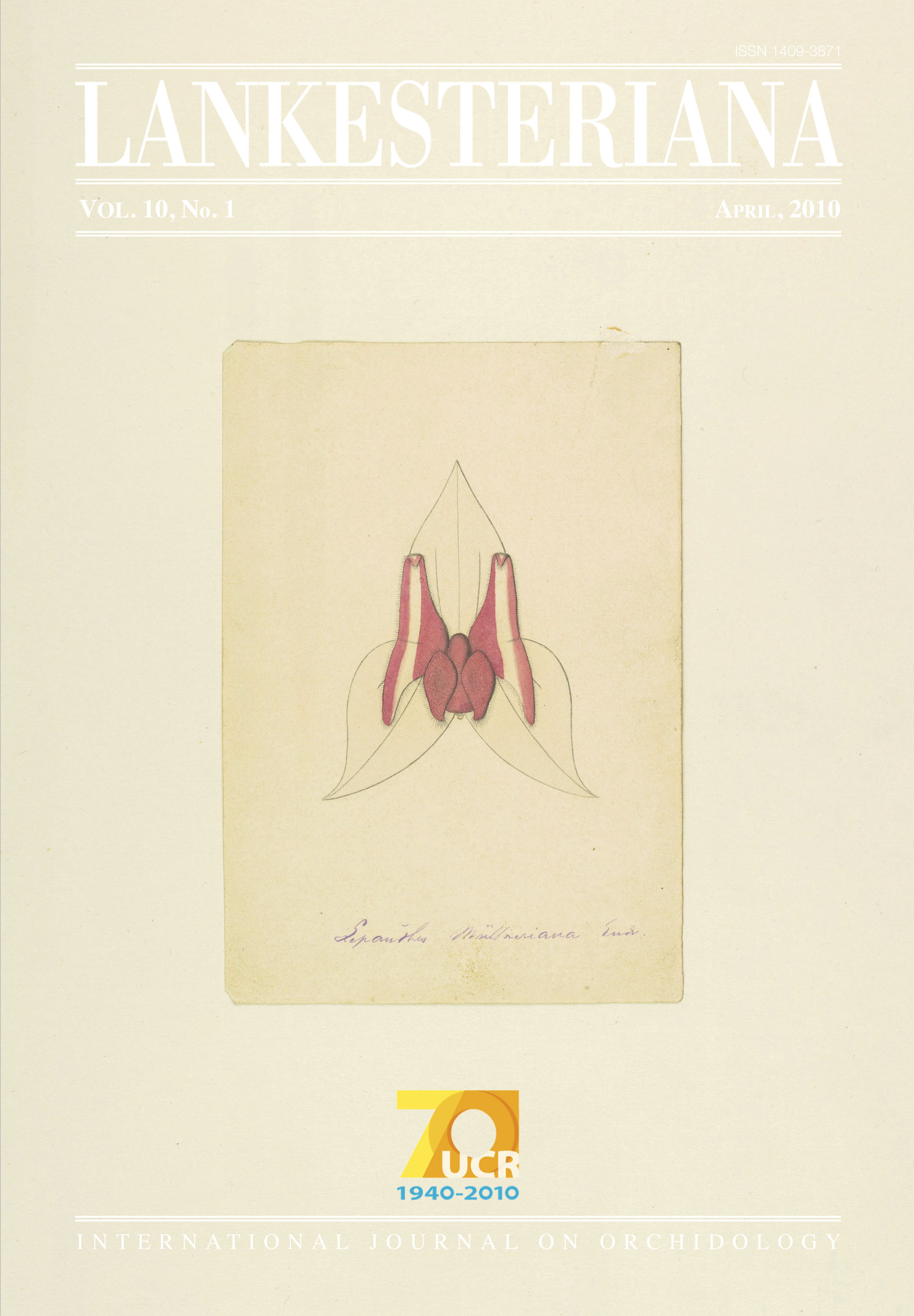Lord of the flies: pollination of Dracula orchids
DOI:
https://doi.org/10.15517/lank.v10i1.18318Keywords:
cloud forest, fly pollination, mycophilous, odor, pollinator behavior, ZygothricaAbstract
The labellum of Dracula orchids looks and smells like mushrooms, and biologists have long hypothesized mushroom mimicry in which mushroom-associated (mycophilous) flies accidentally pollinate these flowers while laying their eggs. In the cloud forest of Ecuador, we observed flower morphology, pollinators and the mechanisms of pollination in two species, Dracula lafleurii Luer & Dalström and D. felix (Luer) Luer. The orchids are visited and pollinated by drosophilid mycophilous flies of the genus Zygothrica, which normally complete part of their life cycles on mushrooms. While these flies court and mate in the flowers, and in the process, pollinate them, they apparently do not lay their eggs in the flowers. The pollination mechanism of Dracula occurs when pollinators’ thoraces are trapped by the incurved flaps of the rostellum which creates an angle between the scutellum and the abdomen for the removal and deposition of the pollinia, a novel feature previously not describe in orchids.
Downloads
Downloads
Published
How to Cite
Issue
Section
License
According to the Open Access policy promoted by the University of Costa Rica, all the papers published by Lankesteriana are licensed under the Creative Commons copyright and can be downloaded free of charge. The journal holds copyright and publishing rights under the CC BY-NC-ND 3.0 CR license.
Before the publication of the materials submitted by the author(s) in LANKESTERIANA, the author(s) hereby assign all rights in the article to the Lankester Botanical Garden.





